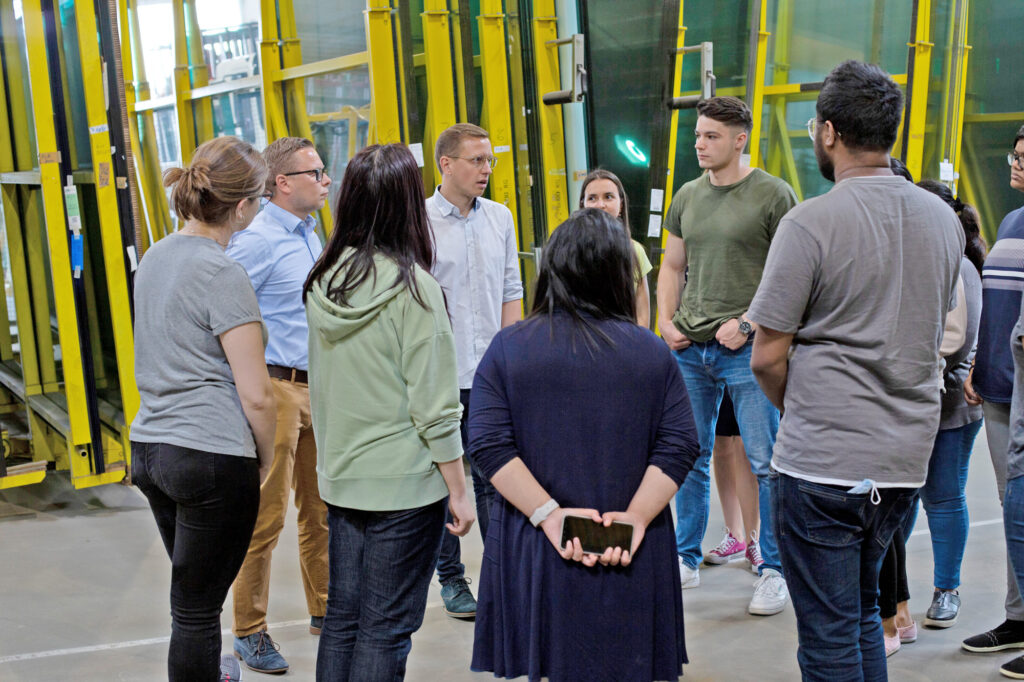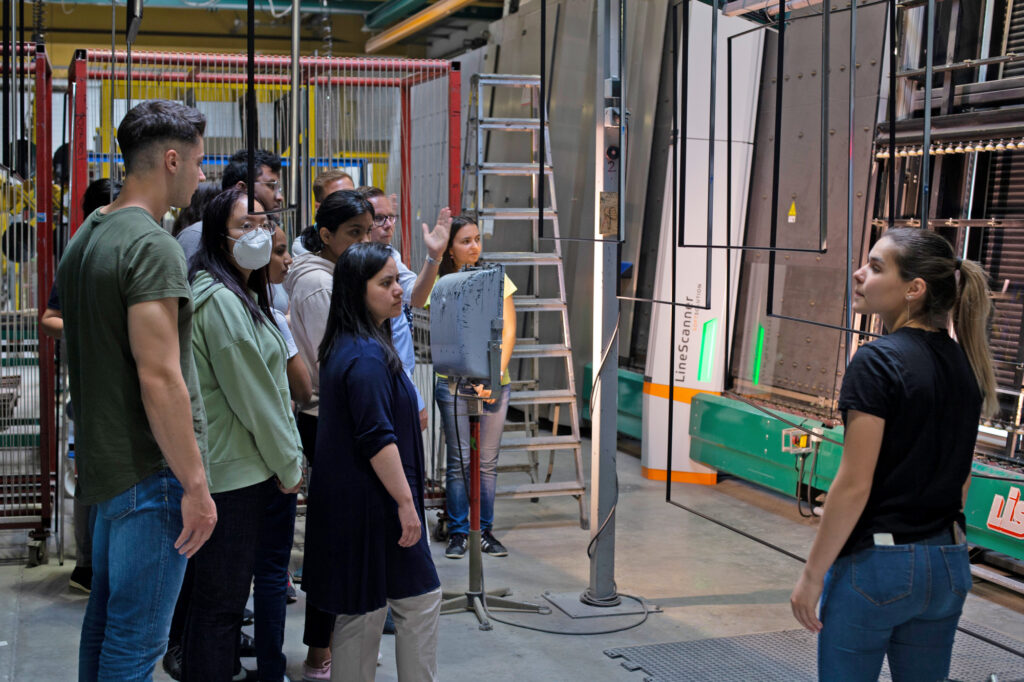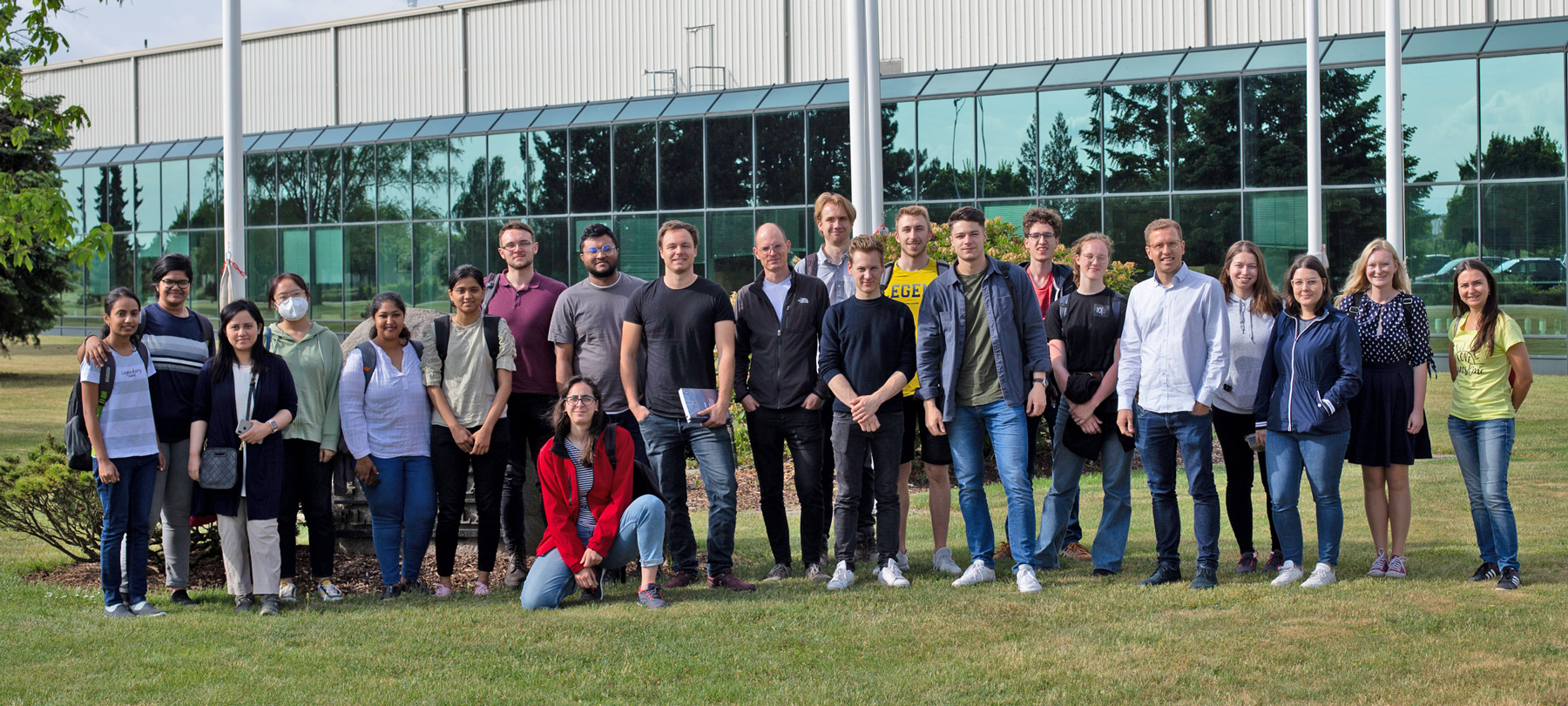Im Rahmen einer Tagesexkursion haben 20 interessierte Studierende der Module „Konstruktiver Glasbau“, „Glasfassaden“ und „Structural Use of Glass“ am 24.05.2022 die Möglichkeit genutzt, nicht nur in der Theorie über die Glasherstellung zu reden, sondern vor Ort Einblicke in die Herstellungsprozesse zu erlangen.

Begonnen wurde mit der Besichtigung des Werkes der Firma Guardian Flachglas in Bitterfeld-Wolfen, in dem die Floatglasherstellung von erfahrenen Mitarbeitern unter der Leitung von Ralf Greiner detailliert erklärt wurde.
Besonders der Blick in den Schmelzofen mit etwa 1600 °C und wie reibungslos die hochpräzisen Prozesse abliefen, faszinierte die Studierenden. Ebenso waren die Anlagen zur Herstellung von Verbundsicherheitsglas im Autoklaven und zur Beschichtung für Sonnenschutz- und Wärmeschutzschichten im Magnetronsputter Teil der Führung.
Als nun geklärt war, wie Flachglas entsteht, ging es im nächsten Schritt zum Glasveredler Flachglas Sachsen nach Grimma. Dort werden die Gläser zu Mehrscheibenisoliergläsern weiterverarbeitet, dessen Prozesse unter Leitung von Stefan Günsche verständlich erklärt wurden.

Das gewonnene Wissen diente als hervorragende Grundlage für ausgiebige und klärende Diskussionen.
Besonderen Dank gilt dabei den Organisatoren sowie den Firmen Guardian Flachglas und Flachglas Sachsen, sowie deren Mitarbeiter: innen, die die Führungen ermöglichten.
Bericht: Jonas Zachmann
On May 24th 2022 around 20 students that are attending courses on glass structures with the Institute of Building Construction had the opportunity to broaden their theoretical knowledge with practical experience visiting two major glass manufacturing companies in Dresden.
The first factory that was visited was Guardian Flachglas factory in Bitterfeld-Wolfen, one of the leading glass production companies in the world (with 10 plants in Europe) which in this location produces around 750 tons of float glass per day. Here the students got to see the process of creating float glass, starting off from the storage of raw materials to the final product. The students got to visit inside the 500 meters production hall, experience the heat of the 1600°C furnace which at all times contains around 1.7 tons of liquid glass, see the way that the liquid glass is mixed to become homogeneous, how it is shaped with special rollers to get the desired thickness, the annealing process (slow cooling down of the glass), the laser inspection for imperfections and the way the glass is cut to pieces and prepared for transport. Alongside the regular procedures of float glass production the students also were able to get an insight into the production of laminated glass in the autoclave and the process of glass coating (sputter coating) for many different uses such as protection from solar radiation, heat radiation and so on.
The next stop of the day was at the glass refiner Flachglas Sachsen in Grimma. At this location the students were able to see how the float glass is further processed into different products, such as laminated glass and insulating glass units. The insulating glass units were quite fascinating for the students and gave them the opportunity to better understand how they work. The students had the chance to see the whole process, from cutting of the glass to the right dimensions, making the initial seal, exchanging the air with argon, to the final seal of the IGU and inspection of the product.
Overall this was a wonderful experience which would not be possible without the organization of the institute as well as Guardian Flachglas factory and Flachglas Sachsen. The students are very grateful for the opportunity which was given to them to broaden their knowledge and understanding of glass as a structural element.
Text by: Jovanka Kuzmanovska

